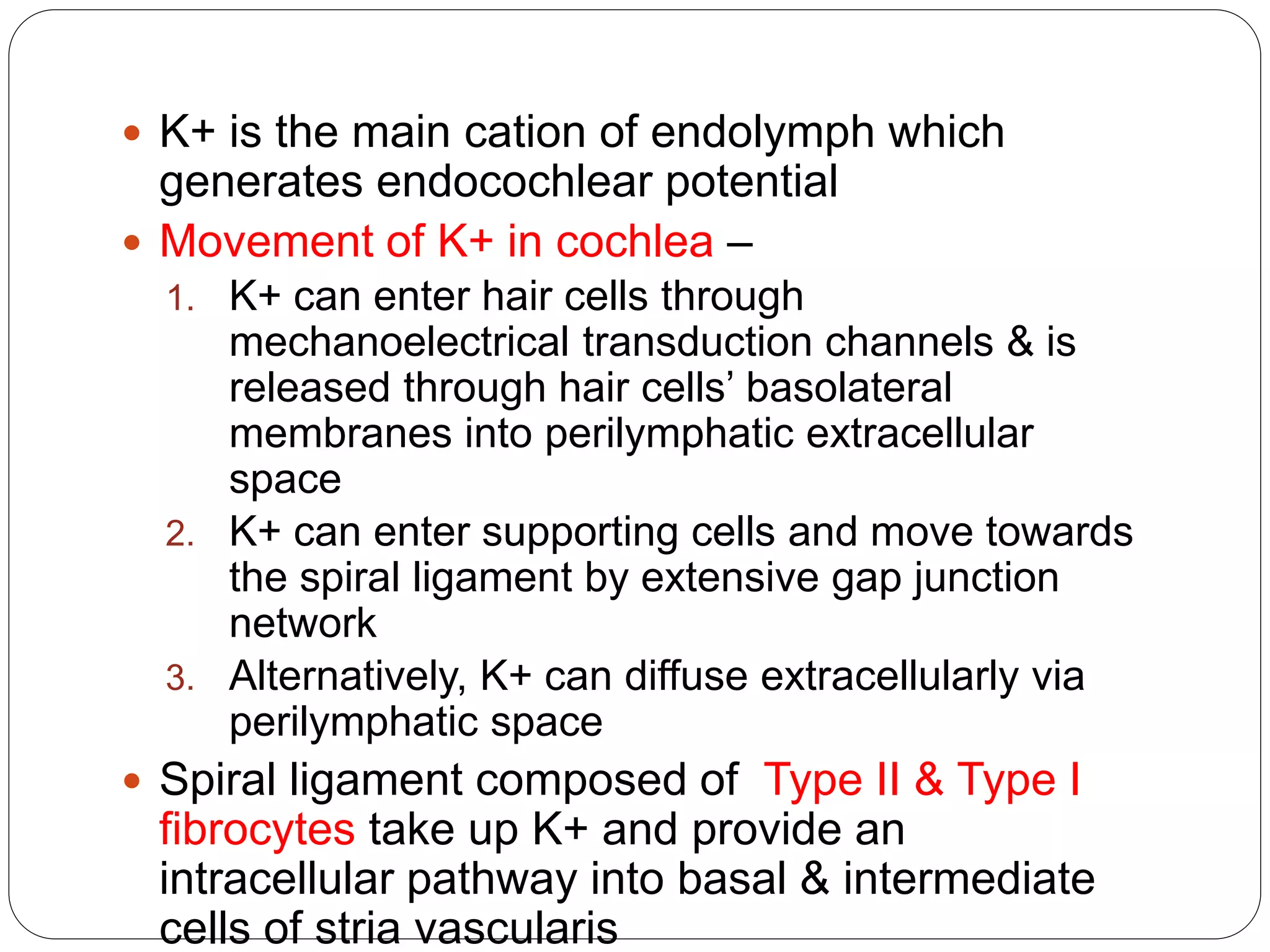The document provides an overview of the inner ear anatomy and physiology. It describes the cochlea as a snail-shaped bony structure that is coiled around a central axis. Within the cochlea lies the membranous labyrinth, which contains three fluid-filled scalae separated by membranes. Sound causes vibrations that move fluids and stimulate hair cells in the organ of Corti. Inner hair cells detect sound and transmit signals, while outer hair cells amplify these signals. Key structures that enable hearing include the stria vascularis, which generates the endocochlear potential providing energy, and potassium circulation pathways that are essential for normal cochlear function.

























































